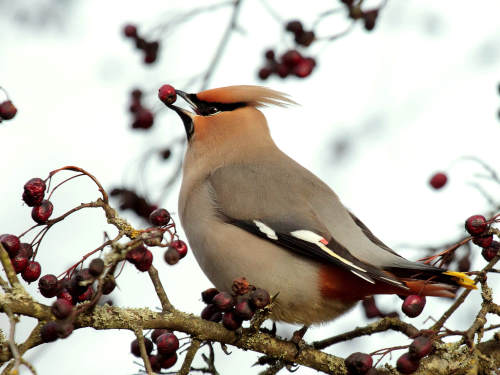Feb |
What to see in March? |
Apr |
||
| Week 9 | Week 10 | Week 11 | Week 12 | Week 13 |
While it’s still dark, damp, and cold most of the time in March, there are often signs of spring. The first beginnings of migration might include Turkey Vultures overhead, or an American Kestrel hunting the meadows.
The first Salmonberry blossoms signal the return of the Rufous Hummingbirds – a sure sign of spring. Say’s Phoebe might be seen flycatching from fenceposts around the meadows, or you might spot a Mountain Bluebird there. Dozens of Tree and Violet-green Swallows can often be seen swirling above the slough or cruising low over the lake.
Yellow-rumped Warblers increase from a trickle in February to a flood by the end of March. If you’re lucky, you might find an Orange-crowned Warbler too. Search the East Meadow for the First-of-the-Year Savannah Sparrow as well. They’re always back after the equinox.
March is the last chance for Northern Shrike, hunting the East Meadow and grass soccer fields, until their return in October. Marymoor is probably the best place to see shrike in the county. These light-gray and black birds are something special.
Rarities for March have included Trumpeter Swan, Red-necked Grebe, Dunlin, Herring Gull, "Thayer’s" Iceland Gull, Glaucous Gull, Eurasian Collared-Dove, Long-eared Owl (three different years), Loggerhead Shrike, Hutton’s Vireo, Townsend’s Solitaire, Bohemian Waxwing, American Tree Sparrow, and Sagebrush Sparrow.
|
|
|

